Summer squash is a mild-tasting, prolific type of squash that will inundate you with its impressive bounty all summer long. Most summer squashes are classified as cucurbito pepo, although not every cucurbito pepo is a real summer squash.
Summer squash is best eaten while it is young and the skin is still tender, however, summer squash does not store well or long. Winter squash is known for its ability to be stored long term and has a much harder, more rigid outer shell than summer squash.
While squash is typically cooked and served like a vegetable, it is technically classified as a fruit because it grows from the flower of a plant and produces seeds.
Lightly sautéed summer squash makes a great side dish that goes with just about any summer menu. Scramble it with your eggs, serve it with herbs and mushrooms, or make it into a casserole.
Some types of squash have a firm flesh that can be made into ‘noodles’ for a healthier version of pasta. Summer squash is delicious to eat, easy to grow, and worth the space in your garden.
Gardeners love growing summer squash because just a few plants will keep you well-fed for the summer.
Squash plants are easy to grow for even the most green gardener, and require very little care. There are many different varieties of summer squash to entice your eyes with their beautiful shapes and colors as well as your palate.
Table of Contents
Varieties of Summer Squash
There are so many varieties of summer squash to choose from, it is difficult to pick just one to grow. The only limit to summer squash is really the space in your garden, as most varieties need a little extra room in between them for airflow.
You could choose your favorite tried and true varieties, like zucchini, or break out into something a little more adventurous, like loofah squash or tatuma squash.
Cocozelle
This Italian-style squash is long and slender, with pale colored stripes over dark green skin. The flesh of this squash is extra tender and boasts a delicious flavor that cooks love.
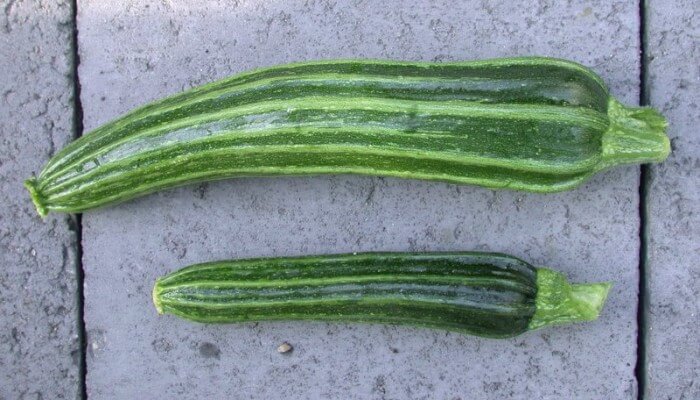
The delicate green fruits are ready in roughly forty five to fifty five days. Plants are large and need adequate space to grow, but the will reward you richly with a delicious, tender squash.
Waltham Butternut
Although this is technically a winter squash due to its thicker skin and longer storage capacity, you’ll want to add this squash to your summer garden. The pale creamy color on the outside of its rind contrasts nicely with the bright orange colored flesh on the inside.

This squash is great for baking, broiling, steaming, and turning into soup. Poke holes in the tough rind with a fork and then microwave the squash for several minutes to soften it for easier peeling and cutting. Waltham Butternut Squash matures in eighty two days and loves the sun.
Zucchini
Zucchini, or courgette, is a long slender green squash that is an all time favorite of novice and experienced growers. Zucchini is best and tastiest when it is picked while it is still young and more tender. Although this squash can grow quite large, its skin gets tougher as it grows larger.
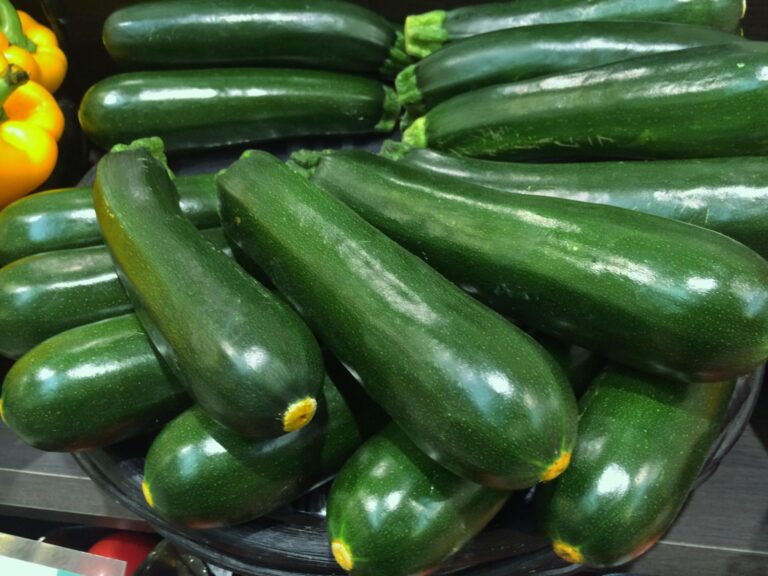
Zucchini are sometimes easy to miss hiding in the bottom of the plant, and before you know it, you will find a few giant fruits to taste! Zucchini plants grow quickly and easily and reach maturity in approximately forty eight days. Keep the zucchini well-picked for continued fruiting throughout the summer.

Yellow Squash
Yellow squash is a variety that is also known as straightneck squash. Early fruits are tender and delicious while fruit left on the vine too long will develop a gourd-like outer skin and a woody type of texture.
Crookneck Squash
Crookneck squash is a version of yellow squash with a lemon yellow color, six inch long fruits, and a slightly bent neck.
These are some of the easiest and most prolific of squash varieties, and will produce all summer long. Plants are more bush-like than vine-like, and should produce fruit in fifty three days.
Ronde de Nice
Ronde de Nice is a French variety of squash that is great for stuffing. Vigorous plants grow round, pale green fruit with a tender inner flesh. This quick growing squash will produce fruit in fifty days.
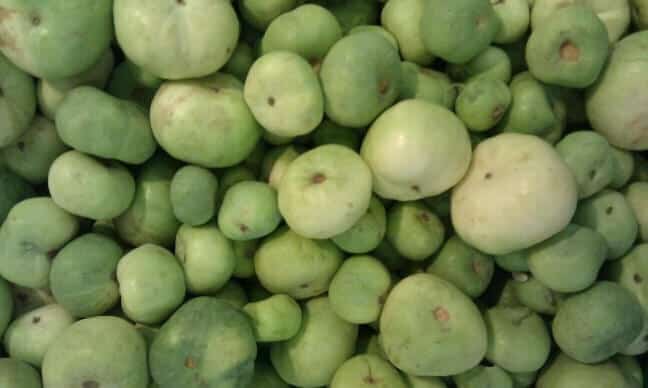
Tinda Squash
This squash is a unique squash with long hairy vines and small round fruits. The vining plants begin to flower at thirty to thirty five days, and produce fruit around sixty days. This squash is native to India and offers a nice change from the traditional zucchini and yellow squash.
Loofah Squash
The loofah, or luffa, squash, is typically seen in bath and body sections of favorite grocery and big box stores. However, immature loofah squash are a delicious fruit and can be cooked and served like any summer squash and even eaten raw.
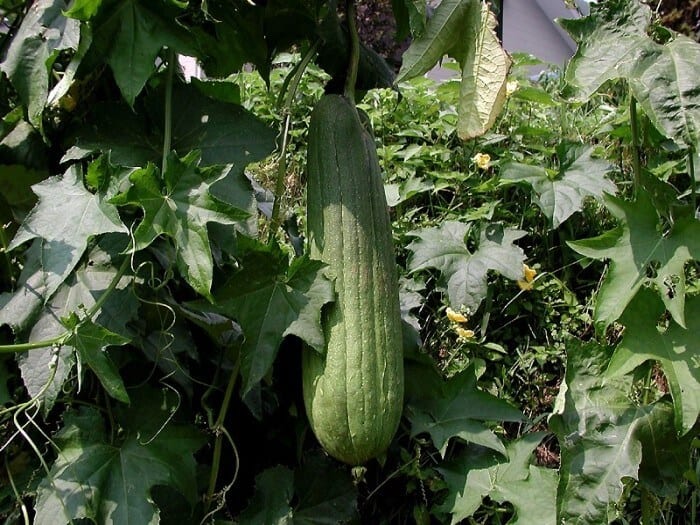
While loofahs are best eaten young, to grow them for sponges takes a long growing season of around 150 days.
Allow these gourd-like squash to dry thoroughly, then crack the hard shell to reveal the natural bath sponge inside. Loofahs are great for the shower, cleaning around the house, and scrubbing pots and pans.
Eight Ball Zucchini
This round, mini zucchini is a tasty tiny squash with dark green skin. They can be substituted for regular zucchini in most recipes, and make the perfect single size for stuffing. These plants mature in about fifty days.
Tatuma
Tatuma squash is best when picked young and works great with Mexican recipes.This squash grows on quick growing vines and produces fruit in as little as forty five days.
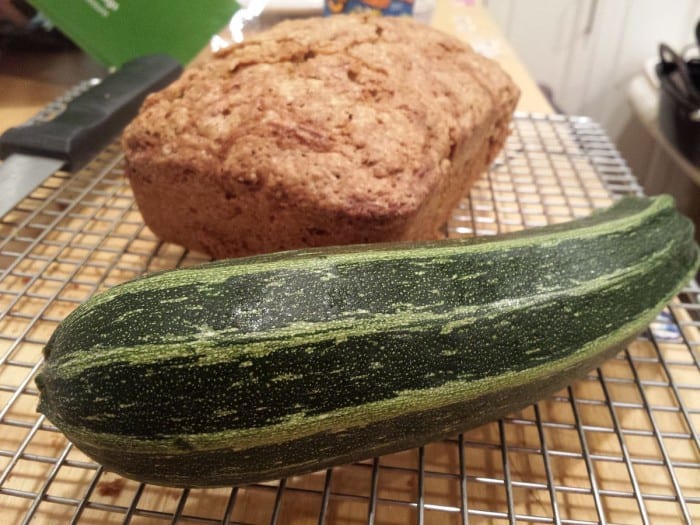
Costata Romanesco
The costata romanesco variety of squash is a traditional Italian heirloom zucchini. This squash does not yield as many fruits as its hybrid counterparts typically do, but boasts amazing flavor and texture. The pretty yellow blooms are edible and can be stuffed or fried.
Pattypan
Pattypan squash are small round, pale colored squash with pretty scalloped edges. The plants of the pattypan are more compact than other varieties of squash and can be grown in large containers if you do not have room in your garden for these pretty squash.
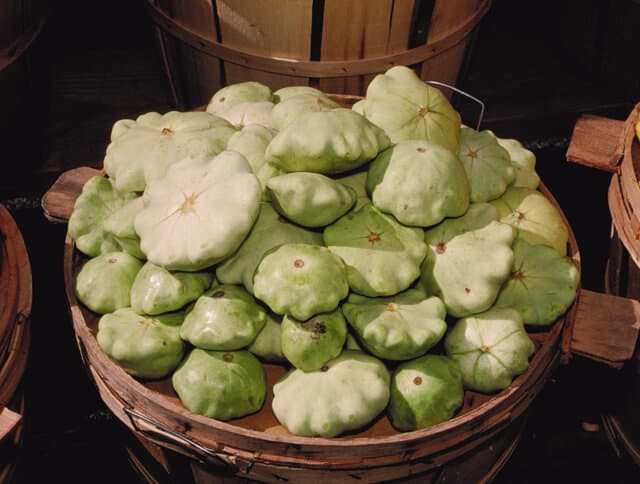
These can be eaten raw when young, or cooked and sautéed when more mature. The offer a light, nutty flavor and grow to maturity in forty nine days.
Cousa
Cousa squash is similar to zucchini, with a shorter and wider shape. Cousa has lighter green coloring with darker green striations. Cousa squash is ready in forty eight days and can be stuffed, sautéed, and even grilled.
Zephyr
The unique coloring of zephyr squash makes it a beautiful garden addition. It is similar in shape to the yellow squash, but varies in its coloring. The top two thirds of the zephyr are a lemon yellow color, while the bottom third ranges from pale to deep green, making it a pretty side dish or garnish.

This hybrid squash is ready to eat in fifty four days and boasts a nutty flavor and firm texture.
When to Plant Summer Squash
Summer squash should be planted in the garden after all danger of frost has passed. To get a jump start on growing squash, you can start your seeds indoors about three weeks before the danger of frost has passed.
Take time to harden off the seedlings before setting them in the garden after the lost frost date. You can succession plant squash throughout the summer, so long as you sow your last planting at least twelve weeks before the first frost date in your gardening zone. Summer squash is very susceptible to frost.
Where to Plant Summer Squash
Squashes do not like to have wet feet. This means squash thrives in soil with good drainage, so it is best to plant them in small hills or raised rows in your garden where the excess water can run off.
Choose a sunny location for your squash plants. Some squash plants vine and need extra room to grow, however, a few grow in small compact bush-like plants that need less space. Plant seeds eight inches apart, and consider thinning plants to one every three feet to ensure adequate airflow.
When to Harvest Summer Squash
Summer squash is best eaten when it is tender and young. That being said, most varieties of summer squash will mature in forty five to fifty five days, depending on the type of squash and the growing conditions in your garden.
Younger, smaller squash will have better flavor, texture, and more tender skins. Squash that reaches full maturity or that is left to grow too long is still edible, but will have tough rinds, less flavor, and a woody texture.
One method to test if squash is ready is press your fingernail through the skin. If it pierces easily, it is young and immature. If you have to work to press your nail through the skin, it is ready to cook. If it is too difficult to pierce the skin with your nail, the squash is past optimum taste and texture but is still edible.
How to Harvest Summer Squash
Do not rip, twist, or tear fruit off of the summer squash plants because this can damage the plants and the fruit. Instead, carefully cut the squash off of the squash plant with a sharp knife.
Leave about an inch of stem on the fruit and be careful not to scrape the fruit or damage the plants. Check for ripe squash every day. Allowing squash to remain on the vine or plant will slow production, so keep the plants well picked.
How to Store Summer Squash
Summer squash does not have a very long storage capacity. Most types of summer squashes will stay good in the refrigerator for a week to ten days after harvesting. For longer term storage, cut and blanch squashes.
Carefully place squash in a plastic bag and freeze. Frozen squash can be sautéed, mixed into scrambled eggs for a healthy omelet, or thawed and baked into bread. Summer squash can also be used in canning.
Pitfalls of Growing Summer Squash
Summer squash are definitely easy to grow and are very prolific, however, they do have a few pitfalls that need to be watched. In warmer growing areas, squash bugs, vine borers, and other pests can cause serious problems for the gardener.
If this is a problem in your area, you may need to wait a few weeks into the growing season to begin planting your summer squash. This will avoid the worst part of the squash bug season and give your plants more freedom to thrive.
Powdery mildew is a problem in the hot, humid days of summer. Depending on where you live, you may not be able to avoid powdery mildew altogether, but you can take some steps to mitigate this problem before it claims the lives of your squash plants.
Powdery mildew is a fungal disease that can affect many types of plants, but it is frequently seen in summer squash plants. The white fungus spreads to the leaves and can weaken your plant, and eventually kill it. Spores are carried by the wind to other plants, so it is best not to compost plants that have been affected with powdery mildew.
Initially, plants will have small round dots of powdery mildew on the tops of the leaves. These dots will grow and spread, causing the plant to look like it was dusted with fine, white flour. Plants will eventually turn yellow and wither. Severely infected plants will die.
To combat powdery mildew, you will need to remove any affected plant parts and destroy them. Then you will need to spray the affected plants to prevent the mildew from spreading to healthy parts o the plant. You can use a commercial fungicide or you can even make your own.
To create your own spray for powdery mildew, mix one teaspoon of baking soda with one quart of water and spray generously on the leaves. Neem oil and sulfur have also been shown to be effective against the spread of powdery mildew, but be sure to follow the manufacturer’s directions.
You may be able to prevent mildew from spreading by carefully washing off the mildew that is present on each leaf.
To prevent powdery mildew from affecting your garden, choose varieties of summer squash that have been cultivated to be resistant to powdery mildew.
Space plants appropriately so they have plenty of airflow between them, which reduces humidity and thus the likelihood of powdery mildew from forming.
Blossom-end Rot is another problem that can be found in squashes, as well as tomatoes and other favorite garden plants. Blossom-end rot shows up as dark, rotten ends on your squash.
Generally, this occurs when there are large fluctuations in moisture as the plant is beginning to produce fruit. When the plant is stressed by the fluctuating moisture, it cannot adequately take in calcium from the soil, which results in blossom-end rot.
Prevent this problem by keeping the soil consistently watered, but not soggy (remember, squash do not like wet feet). Consider adding mulch around your plants to maintain a more consistent moisture level in the soil.
When transplanting squash plants, you may want to add oyster shell or some other form of calcium to the dirt where the squash plant is being transplanted.
While transplanting may help you get a jump on the growing season, it can be particularly stressful for plants like summer squashes. Summer squashes do not like their roots to be disturbed.
So when starting your summer squash indoors, plant them in peat pots or DIY newspaper pots that will disintegrate when planted.
This way, you can transplant your summer squash plants without disturbing their roots. If you must remove squash from their containers, do so carefully and avoid disturbing the roots as much as possible.
Tips for Growing Summer Squash
Summer squash need lots of space and air flow to prevent problems such as powdery mildew. Extra space between plants will allow excess humidity to escape and give room for your plants to thrive and grow.
While most summer squash grow in a bush type formation rather than vine, they still need room to breathe. Plant seeds eight inches apart to start. After plants begin to grow, thin to every three feet for optimum spacing.
For optimum plant and fruit growth, you may want to fertilize your summer squash. At planting time, work in a generous amount of compost into your hill or row.
You may fertilize the plants after seedlings emerge, using a 10-10-10 fertilizer. Fertilize again when blooms have appeared and your summer squash plants are beginning to set fruit.
You could also fertilize with compost tea or organic fertilizer. Be careful not to allow fertilizer to directly touch tender young plants because they could burn from the fertilizer.
Squash plants need to be watered once a week if there has not been any rain. Water plants slowly and thoroughly at the base of the plant, being careful not to wash away soil from the roots of the squash plants.
If fruit yields are low, poor pollination may be the problem. If you do not have enough pollinators in your area, you can pollinate your summer squash plants using a small art brush or cotton swab. Pollinating is very simple.
Squash flowers are either male or female. The male flowers are the first to appear in the spring to attract bees.
The female flowers show up a little later and have a small ovum at the base of the flower, which looks like a baby squash. If fertilized, this ovum will grow into a squash.
Take some pollen from the stamen of the male flower with your brush or cotton swab and put it onto the pistils of the female flowers. Soon, the female flowers will begin to grow a bounty of summer squash.
What to Do with All That Summer Squash
Summer squash seems to go from no fruit to a huge harvest overnight. You will probably need to pick your summer squash every day to make sure you do not miss any wonderful fruit before it gets too tough to eat.
Be gentle with the plants and leaves, but look carefully around the bottom of the plant for squash that may be hidden. So what do you do when you are overrun with summer squash?
Sautéed summer squash is delicious. Most varieties of summer squash can be sliced and sautéed in olive oil with a few Italian herbs and eaten as a side dish like most other vegetables.
Slice them thin and scramble them with eggs or mix them into your favorite quiche. Summer squash also makes a great addition to just about any casserole.
For those on a low carb diet, use a spiralizer to turn zucchini into delicious noodles. Simply sautée the ‘noodles’ for a few minutes for a devious, healthy dish that can be topped with your favorite pasta sauce.
Round summer squash can be hollowed out and stuffed with ground beef or turkey and tomato sauce, while long zucchini make great ‘zucchini boats’ for tomato sauce and cheese.
Firmer varieties of squash taste delicious when grilled. For more colorful dishes, grow and cook contrasting colors of summer squash to liven up your plate.
Although summer squash does not store much longer than a week in the refrigerator, most varieties can be blanched and frozen for use in casseroles, breads, and quiche.
Summer squash makes a great garden addition. It is easy to grow and very prolific. With so many available varieties, you may want to split a couple of seed packets with friends so you can all try a colorful mix of delicious summer squash.
Give your plants plenty of space, a little fertilizer, and just enough water, and you will be blessed with plenty of delicious squash all summer long.
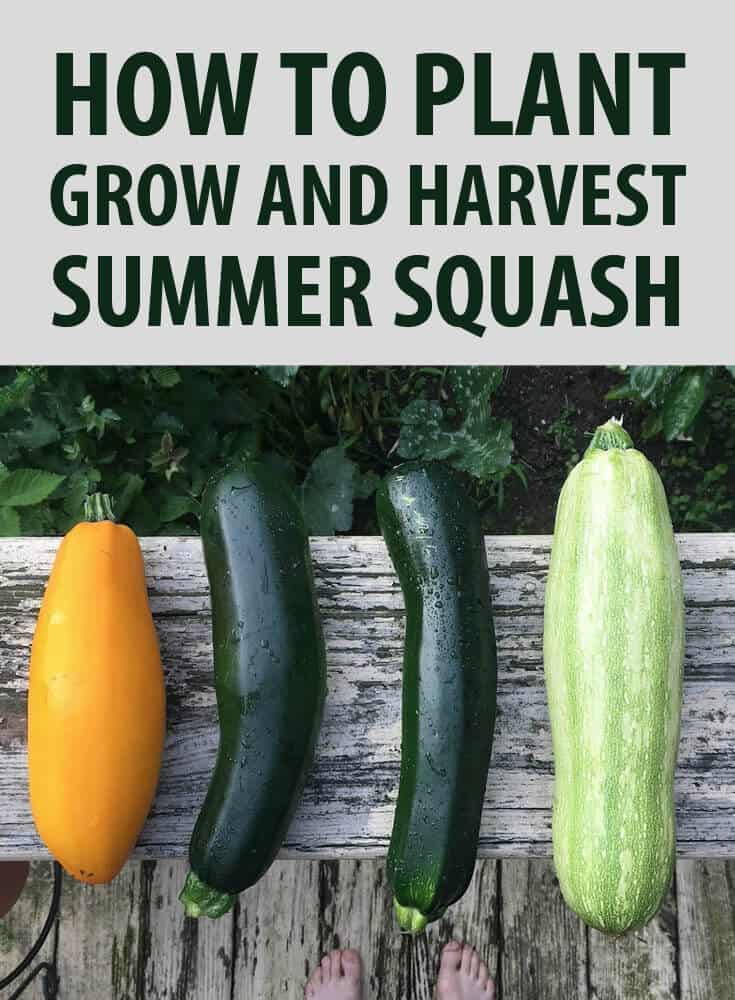

Amanda is a homesteader and a Jesus-loving, mother of 6 toddlers. She’s raising lots of fancy chickens and goats on her small homestead (among other things). Find out more about the team here.
